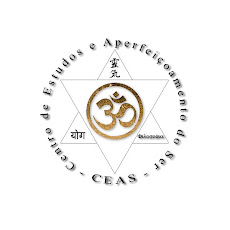Friday, June 11, 2010
Chakras I
Chakra (derived from the Sanskrit cakraṃ चक्रं ([ˈtʃəkrə̃]), pronounced [ˈtʃəkrə] in Hindi; Pali: ॰हक्क chakka, Chinese: 轮, Tibetan: འཁོར་ལོ་; khorlo) is a Sanskrit word that translates as "wheel" or "turning".
Chakra is a concept referring to wheel-like vortices which, according to traditional Indian medicine, are believed to exist in the surface of the etheric double of man. The Chakras are said to be "force centres" or whorls of energy permeating, from a point on the physical body, the layers of the subtle bodies in an ever-increasing fan-shaped formation (the fans make the shape of a love heart). Rotating vortices of subtle matter, they are considered the focal points for the reception and transmission of energies. Seven major chakras or energy centres (also understood as wheels of light) are generally believed to exist, located within the subtle body.
It is typical for chakras to be depicted as either flower-like or wheel-like. In the former, a specific number of petals are shown around the perimeter of a circle. In the latter, a certain number of spokes divide the circle into segments that make the chakra resemble a wheel or chakra. Each chakra possesses a specific number of segments or petals.
Texts documenting the chakras go back as far as the later Upanishads.
The Integral Yoga and Other Yogas
This yoga aims at the conscious union with the Divine in the supermind and the transformation of the nature. The ordinary yogas go straight from Mind into some featureless condition of the cosmic silence and through it try to disappear upward into the Highest. The object of this yoga is to transcend Mind and enter into the Divine Truth of Sachidananda which is not only static but dynamic and raise the whole being into that truth.
Those who seek the Self by the old yogas separate themselves from mind, life and body and realise the self of it all as different from these things. It is perfectly easy to separate mind, vital and physical from each other without the aid of supermind. It is done by the ordinary yogas. The difference between this and the old yogas is not that they are incompetent and cannot do these things - they can do this perfectly well - but that they proceed from realisation of Self to Nirvana or some Heaven and abandon life, while this does not abandon life. The supramental is necessary for the transformation of terrestrial life and being, not for reaching the Self. One must realise Self first, only afterwards can one realise the supermind. - Sri Aurobindo
Those who seek the Self by the old yogas separate themselves from mind, life and body and realise the self of it all as different from these things. It is perfectly easy to separate mind, vital and physical from each other without the aid of supermind. It is done by the ordinary yogas. The difference between this and the old yogas is not that they are incompetent and cannot do these things - they can do this perfectly well - but that they proceed from realisation of Self to Nirvana or some Heaven and abandon life, while this does not abandon life. The supramental is necessary for the transformation of terrestrial life and being, not for reaching the Self. One must realise Self first, only afterwards can one realise the supermind. - Sri Aurobindo
Subscribe to:
Posts (Atom)


